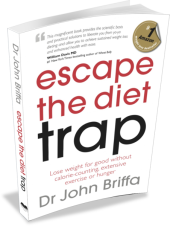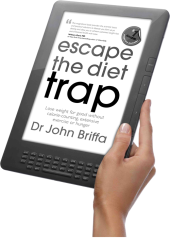I came across this report last week of a study into sleep-wake cycles. A group of adults were monitored in their normal environments (with electrical lighting, TV and electronic devices) and also had their levels of the ‘sleep hormone’ melatonin assessed [1]. It was discovered that in their normal environment, melatonin secretion was generally delayed at night. Also, at 8 o’clock in the morning melatonin levels were still raised, and remained high for several hours after they got up. High levels of melatonin are good when we want to sleep, but not so good if we want to feel fully energised and ‘raring to go’.
This ‘delaying’ effect on melatonin is not too much of a surprise, as previous research has produced similar findings. In one study, exposure to room lighting prior to bedtime delayed melatonin secretion by 90 minutes on average, and reduced the overall amount of melatonin too [2]. In another study, lights from laptops and tablet devices was also found to suppress melatonin too [3].
The study subjects were then taking camping for a week, with the only light they were exposed to coming from the sun and a campfire. By the end of the week, the study subjects had their sleep ‘synchronise’ with the setting and rising of the sun. The sleep-wake cycle shifted by about 2 hours back (earlier). And in the morning, melatonin levels were found to be low (as they should be).
Getting more natural light during the day is very likely to have been a significant factor here, I think. Melatonin is actually made from the brain chemical serotonin, the production of which is stimulated by sunlight [4].
Could waking up to dawn light also have brought some benefits for the people in the study? It seems so, as ‘dawn simulation’ does seem to have the potential to benefit people. Dawn simulation devices are essentially alarm clocks that use light (rather than sound) to wake people up (though some devices combine the two). Dawn simulation has been found to help people suffering from seasonal affective disorder (‘winter blues’) [5-7] and in particular seems to help people get up in the morning [8].
This could be of particular use in the winter, as many find that getting out of bed and on with the day on dark mornings is a struggle. Other research in those prone to problems in the winter found that dawn simulation can improve energy on waking, as well as mood, productivity and quality of sleep [9]. Dawn simulation alarm clocks are widely available from manufacturers such as Philips and Lumie.
It’s generally impractical for many of us to live ‘under canvas’, but there are steps we can take to give our brain the best chance of being ‘in sync’ with natural sleep cycles. If I were to boil my advice down into simple pieces of advice, I would suggest:
- Getting some decent natural light exposure during the day.
- Keep light exposure from room lighting and devices as low as possible in the evening
- The use of a ‘dawn simulation’ alarm clock in the morning
All of these are more important in the winter, as this is the time people tend to struggle most with mood and sleep issues.
References:
- Wright KP, et al. Entrainment of the Human Circadian Clock to the Natural Light-Dark Cycle Current Biology, 01 August 2013
- Gooley JJ, et al. Exposure to room light prior to bedtime suppresses melatonin onset and shortens melatonin duration in humans. J Clin Endocrinol Metab 2011;96(3):E463-72
- Wood B, et al. Light levels and duration determines the impact of self-luminous tablets on melatonin suppression. Applied Ergonomics 2013;44(2):237-240
- Lamber GW, et al. Effect of sunlight and season on serotonin turnover in the brain. The Lancet 2002;360(9348):1840-1842
- Avery DH, et al. Dawn simulation and bright light in the treatment of SAD: a controlled study. Biol Psychiatry 2001;50:205-216
- Avery DH, et al. Dawn simulation treatment of winter depression: a controlled study. Am J Psychiatry. 1993;150(1):113-7
- Avery DH, et al. Dawn simulation compared with a dim red signal in the treatment of winter depression. Biol Psychiatry. 1994;36(3):180-8
- Avery DH, et al. Is dawn simulation effective in ameliorating the difficulty awakening in seasonal affective disorder associated with hypersomnia? J Affect Disord 2002;69:231-236
- Norden MJ, et al. A controlled study of dawn simulation in subsyndromal winter depression. Acta Psychiatr Scand. 1993;88(1):67-71
[hr]
[box style=”rounded” border=”full”]
Dr John Briffa’s best-selling ESCAPE THE DIET TRAP – lose weight without calorie-counting, extensive exercise or hunger is available in the UK and US
“This magnificent book provides the scientific basis and practical solutions to liberate you from yo-yo dieting and allow you to achieve sustained weight loss and enhanced health with ease.”
William Davis MD – #1 New York Times bestselling author of Wheat Belly
To read some of the dozens of 5-star reviews for this book [button link=”http://www.drbriffa.com/amazon-reviews-for-escape-the-diet-trap/” color=”silver” text=”dark” window=”yes”]click here[/button]
To buy a paperback copy of the book from amazon.co.uk [button link=”http://www.amazon.co.uk/Escape-Diet-Trap-John-Briffa/dp/0007447760/ref=tmm_pap_title_0?ie=UTF8&qid=1324815918&sr=1-1″ color=”orange” window=”yes”]click here[/button]
To buy a kindle version of the book from amazon.co.uk [button link=”http://www.amazon.co.uk/Escape-the-Diet-Trap-ebook/dp/B005ODY0RW/ref=tmm_kin_title_0?ie=UTF8&qid=1324815918&sr=1-1″ color=”orange” window=”yes”]click here[/button]

To buy a print copy of the book from amazon.com [button link=”http://www.amazon.com/Escape-Diet-Trap-calorie-counting-extensive/dp/0957581602/” color=”orange” window=”yes”]click here[/button]

To buy the kindle version of the book from amazon.com [button link=”http://www.amazon.com/dp/B00BLQ40QM” color=”orange” window=”yes”]click here[/button]
[/box]